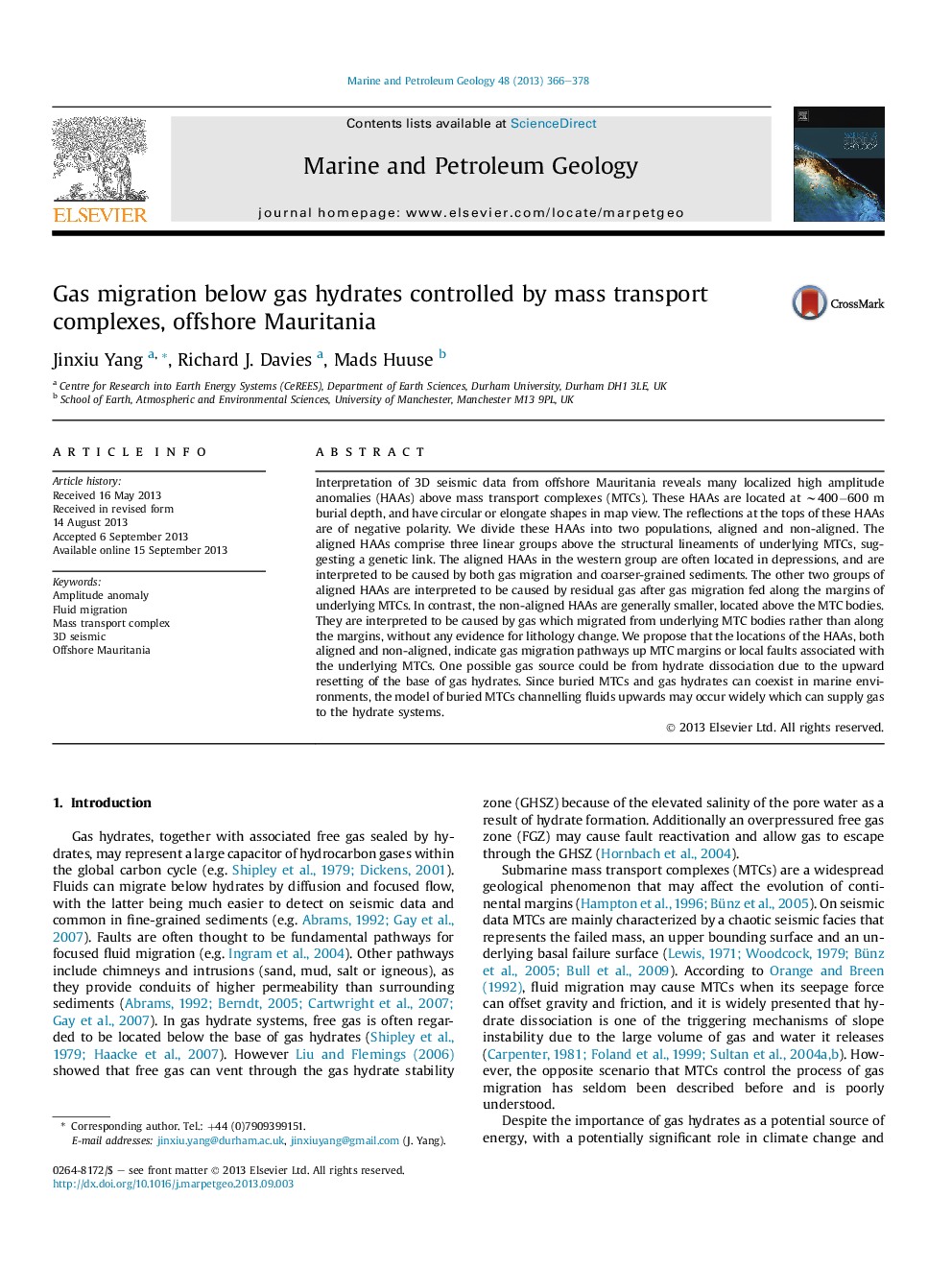| کد مقاله | کد نشریه | سال انتشار | مقاله انگلیسی | نسخه تمام متن |
|---|---|---|---|---|
| 4695838 | 1637176 | 2013 | 13 صفحه PDF | دانلود رایگان |
• We observe aligned high amplitude anomalies (HAAs) above the margins of MTCs.
• There are many non-aligned HAAs above the MTC bodies.
• The HAAs indicate gas migration along structures related to the MTCs.
• The gas migration may be caused by hydrate dissociation.
• The model should be generally applicable for the co-location of MTCs and hydrates.
Interpretation of 3D seismic data from offshore Mauritania reveals many localized high amplitude anomalies (HAAs) above mass transport complexes (MTCs). These HAAs are located at ∼400−600 m burial depth, and have circular or elongate shapes in map view. The reflections at the tops of these HAAs are of negative polarity. We divide these HAAs into two populations, aligned and non-aligned. The aligned HAAs comprise three linear groups above the structural lineaments of underlying MTCs, suggesting a genetic link. The aligned HAAs in the western group are often located in depressions, and are interpreted to be caused by both gas migration and coarser-grained sediments. The other two groups of aligned HAAs are interpreted to be caused by residual gas after gas migration fed along the margins of underlying MTCs. In contrast, the non-aligned HAAs are generally smaller, located above the MTC bodies. They are interpreted to be caused by gas which migrated from underlying MTC bodies rather than along the margins, without any evidence for lithology change. We propose that the locations of the HAAs, both aligned and non-aligned, indicate gas migration pathways up MTC margins or local faults associated with the underlying MTCs. One possible gas source could be from hydrate dissociation due to the upward resetting of the base of gas hydrates. Since buried MTCs and gas hydrates can coexist in marine environments, the model of buried MTCs channelling fluids upwards may occur widely which can supply gas to the hydrate systems.
Figure optionsDownload as PowerPoint slide
Journal: Marine and Petroleum Geology - Volume 48, December 2013, Pages 366–378
